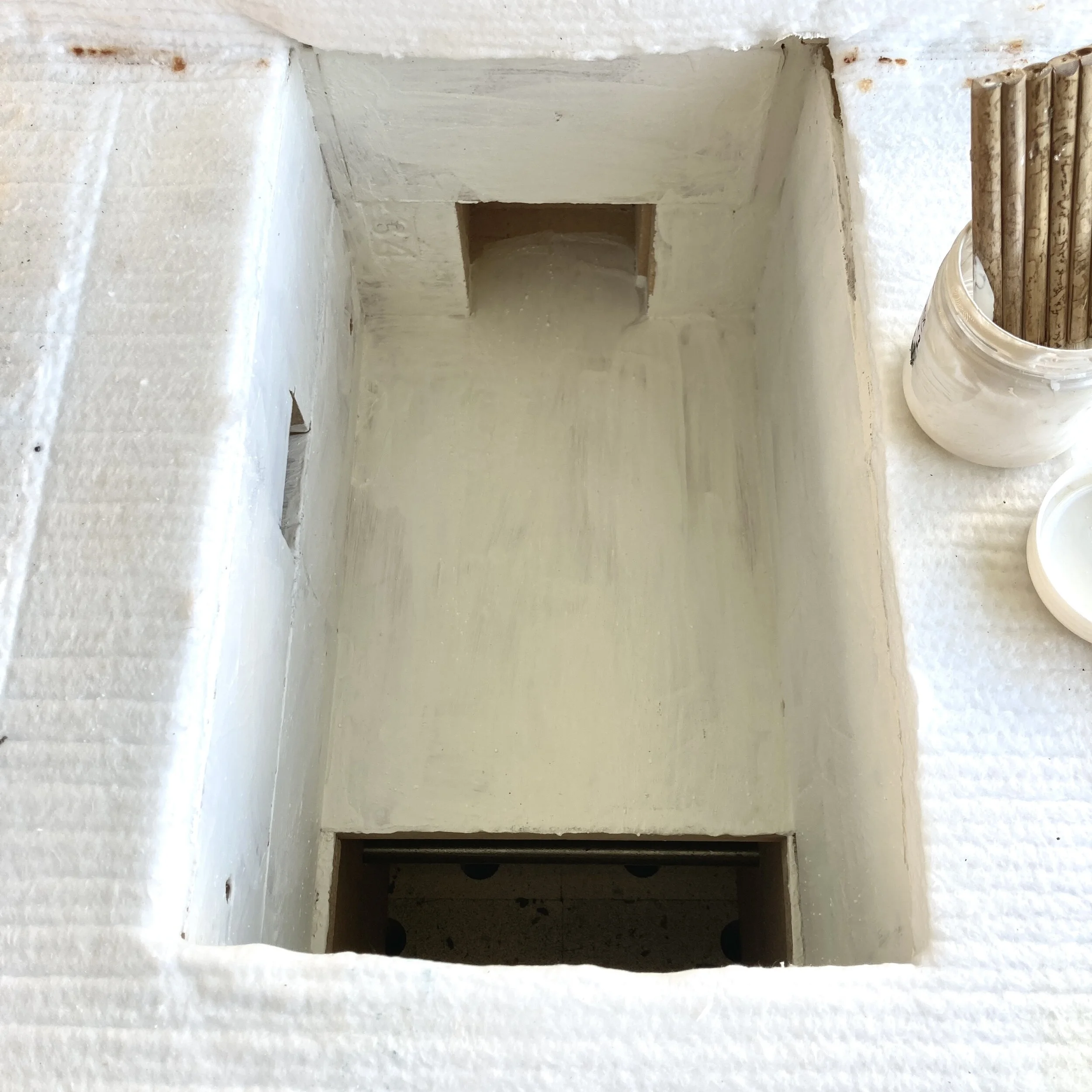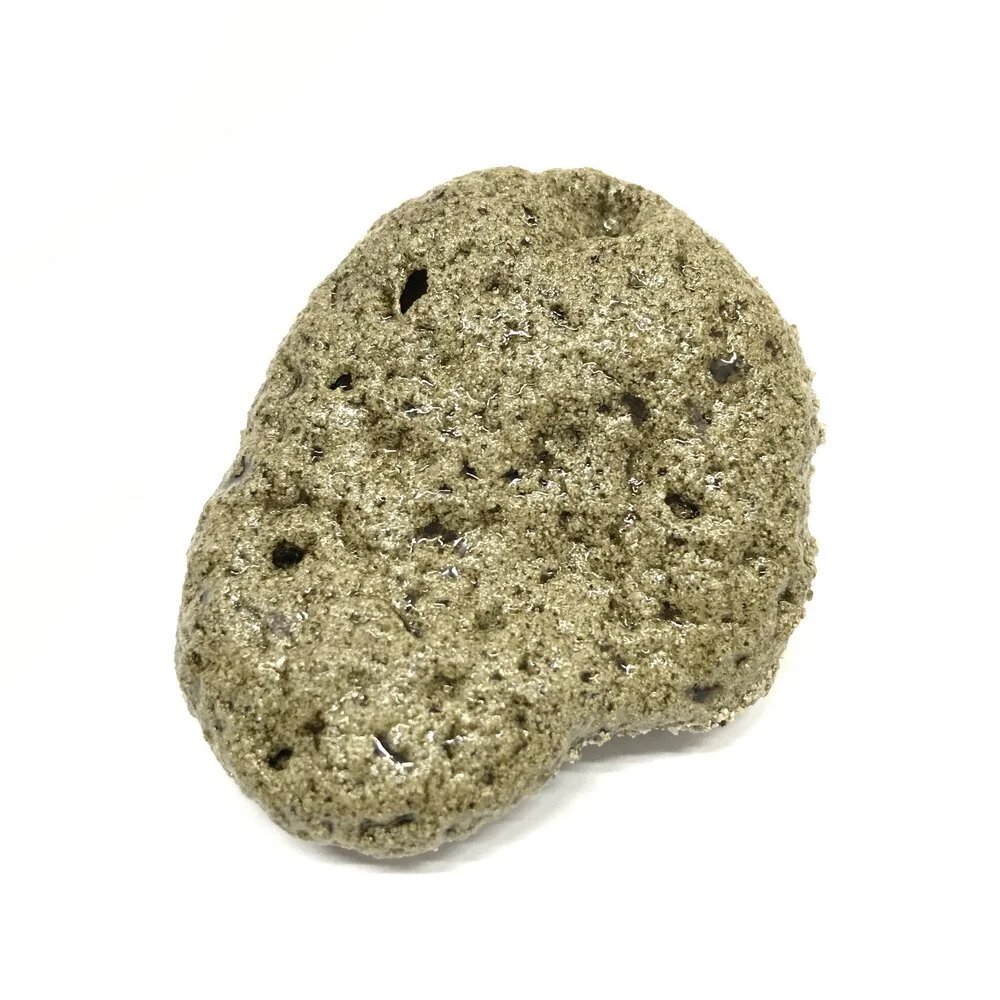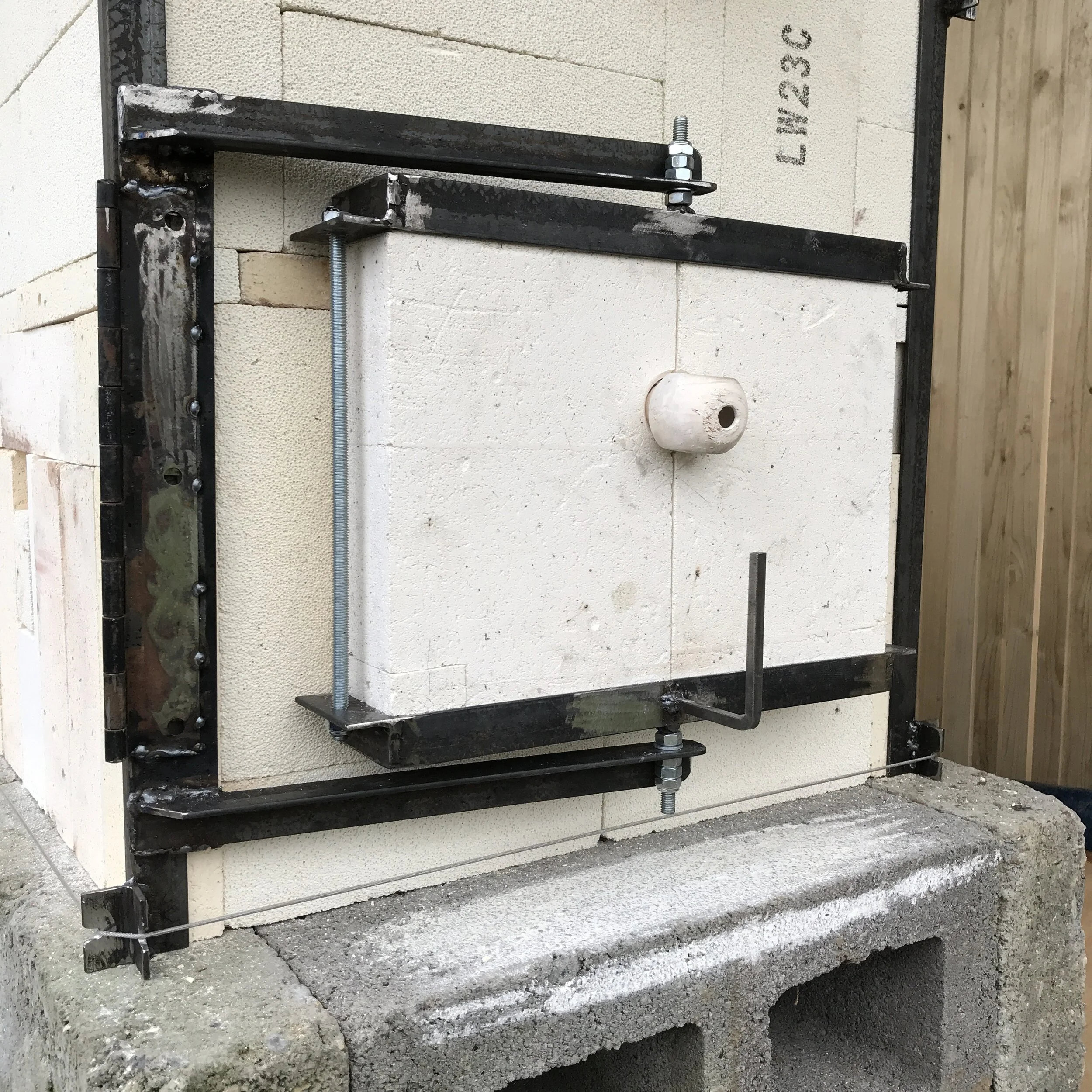Wad & Wash
Wadding and Kiln-wash, for the uninitiated, are all about protecting your precious work, and your precious kiln, during the actual firing.
Kiln wash is a protective coating painted onto shelves which stops any drips of glaze and, in the case of soda/salt firings, the airborne ash and sodium, from eating into the shelves and props and bricks. (kilns and kiln ‘furniture’ are pretty expensive things!)
Wadding is often a putty like mixture which is moulded into shapes which lift the work off the shelves. Again it is designed to stop any glaze/ash/salt from sticking the work to the shelf, and also allows the ‘atmosphere’ of sodium and ash under the work to form marks and glaze on the underside. Sometimes shells are used, and often wadding and kiln-wash mix just come from a dusty bucket in the kiln shed or the corner of the studio.
Of course these materials are another of the hundreds of decisions which we navigate when making work, and there are many many options to consider. The following articles are far better written than this blog-post, and give some good insight along with some useful recipes:
“How to Find the Best Kiln Wash for Your Firing Temperature and Methods” by John Britt
“Wadding for Wood Firing” by Simon Levin
I pulled together some recipes from “Salt Glazing” by Phil Rogers, and asked the amazing wood-firing community on Instagram for their thoughts:
So often, these decisions are dictated by what particular powders you happen to already have, and the ideal also might be compromised by cost and local availability of ingredients. Perversely, I had a stock of Calcined Alumina, rather than the Alumina Hydrate which so many of the recipes call for. Again, a little crowd-sourcing on Instagram gleaned some interesting feedback:
It may just be lucky old me, but the Ceramics Community on Instagram is pretty amazing at helping our and sharing ideas/experiences/suggestions. True to form, I had several responses, and every conceivable answer:
“…it’s what we had”
“...the boss says it’s cheaper”
“…hydrate works, why change it?!”
“…COST!”
“…hydrate suspends better in the mixture”
“…don’t use alumina in wadding, it leaves white marks”
From my own research on digitalfire.com, one enormous difference between the two materials is that Alumina Hydrate looses almost 35% by weight during the first firing(!). So, I concluded, whilst Calcined Alumina might be more expensive, it is a more stable material which will shrink less and provide a more even base in Kiln-wash (remember what John Britt was saying about shrinkage and cracking?).
And so at least with the kiln-wash I made my choice; mostly informed, slightly intuitive, certainly compromised, and we shall see… As for the wadding, I am going to test out several recipes in the first few firings and then make my mind up.



















